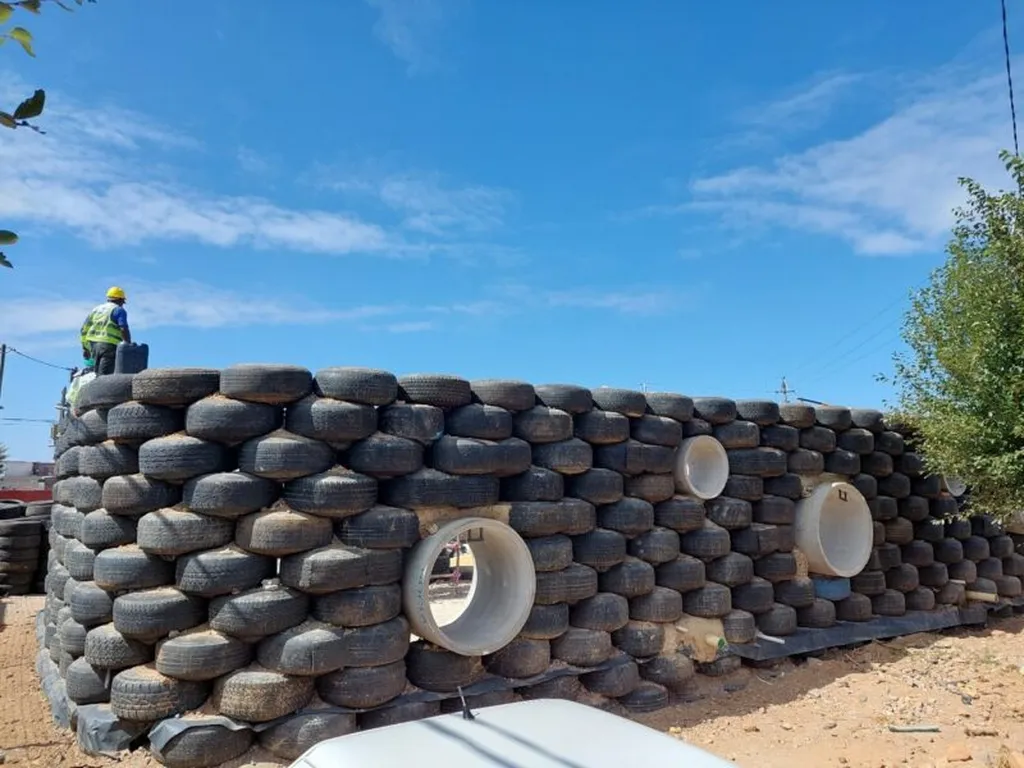In the heart of Delft, Cape Town, an unconventional construction project is turning heads and turning tires into classrooms. The Ulwazi Educare tyre building, a testament to ingenuity and sustainability, is at the center of a new study published in the Journal of Asian Architecture and Building Engineering (translated as “Journal of Asian Architecture and Building Engineering”). The research, led by Alex Kihehere Mukiga from the University of the Free State, explores how natural building practices and regenerative models are being employed to combat the climate crisis, with significant implications for the energy sector.
The study delves into the experiences of builders who are eschewing traditional materials in favor of recycled waste, such as post-consumer plastics, bottles, and car tires. These materials are not only reducing environmental impact but also promoting insulated, low-carbon infrastructure. “We’re seeing a shift in the construction industry,” says Mukiga. “Builders are increasingly aware of their carbon footprint and are seeking innovative ways to reduce it.”
The research, which involved in-depth interviews with 20 builders and five experts in natural building, reveals a growing trend towards what Mukiga terms “post-natural building techniques.” These techniques involve the use of natural materials and recycled waste to create buildings that are not only sustainable but also regenerative, contributing positively to the environment.
The implications for the energy sector are substantial. Buildings account for a significant portion of global energy consumption, and the adoption of sustainable and regenerative building materials could dramatically reduce this figure. “The energy sector has a vested interest in these developments,” says Mukiga. “As buildings become more energy-efficient, the demand for energy decreases, which could reshape the energy market.”
The study also highlights the potential for these techniques to be applied in similar contexts, offering viable models for sustainable construction worldwide. As the climate crisis deepens, the need for such innovative approaches becomes ever more urgent. The Ulwazi Educare tyre building stands as a beacon of hope, a testament to the power of human ingenuity in the face of environmental challenge.
This research could shape future developments in the field by encouraging more builders to adopt sustainable and regenerative building materials. It also underscores the importance of interdisciplinary collaboration, bringing together experts from the construction industry, the energy sector, and environmental science to tackle the climate crisis head-on. As Mukiga puts it, “We’re not just building buildings; we’re building a sustainable future.”

